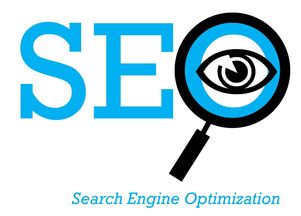
Website optimization is a crucial aspect of enhancing online visibility, improving user experience, and ensuring that your website ranks well on search engines. There are various techniques and procedures involved in optimizing a website, which can be broadly categorized into on-page and off-page optimization. Here's a comprehensive guide to the methods and steps you should consider when optimizing your website.
1、Keyword Research: The first step in website optimization is conducting thorough keyword research to identify the relevant keywords and phrases that your target audience uses to find information related to your business or industry. This will help you create content that resonates with your audience and improve your website's relevance in search results.
2、On-Page Optimization: This involves optimizing various elements on your website to make it more search engine friendly. Some important on-page optimization techniques include:
a. Optimizing Title Tags: Ensure that each page on your website has a unique and descriptive title tag containing your primary keyword.
b. Meta Descriptions: Write compelling meta descriptions for each page that accurately describe the content and include your primary keyword.
c. Headers and Subheaders: Use H1, H2, and H3 headers to organize your content and make it easier for users and search engines to understand.
d. URL Structure: Create clean and descriptive URLs that include your primary keyword and are easy to read.
e. Image Optimization: Optimize images by compressing them, using descriptive file names, and adding alt tags with relevant keywords.
f. Content Quality: Publish high-quality, original, and engaging content that provides value to your audience and includes your target keywords naturally.
3、Off-Page Optimization: This involves optimizing external factors that can influence your website's ranking on search engines. Some important off-page optimization techniques include:
a. Backlink Building: Build high-quality backlinks from reputable websites in your industry to improve your website's authority and credibility.
b. Social Media Engagement: Promote your website and its content on social media platforms to increase visibility and drive traffic.
c. Guest Blogging: Contribute high-quality guest posts to other websites in your industry to build relationships, gain exposure, and earn backlinks.
d. Local SEO: Optimize your website for local search by creating location-specific content, claiming your Google My Business listing, and building local citations.
4、Technical SEO: This involves optimizing the technical aspects of your website to ensure that search engines can crawl and index your content effectively. Some important technical SEO techniques include:
a. Mobile-Friendly Design: Ensure that your website is responsive and mobile-friendly, as this is a significant ranking factor for search engines.
b. Page Speed: Optimize your website's loading speed by compressing images, minifying CSS and JavaScript files, and using a content delivery network (CDN).
c. Security: Secure your website with an SSL certificate and keep your software and plugins up-to-date to protect your users' data and improve your website's trustworthiness.
d. XML Sitemap: Create an XML sitemap to help search engines understand the structure of your website and index your content more efficiently.
5、Analytics and Reporting: Monitor your website's performance using tools like Google Analytics and Google Search Console to track your progress, identify areas for improvement, and adjust your optimization strategy accordingly.
By following these website optimization techniques and procedures, you can improve your website's visibility, attract more traffic, and provide a better user experience for your visitors. Remember that website optimization is an ongoing process, so it's essential to stay up-to-date with the Latest trends and best practices in the industry.
评论列表 (0条)